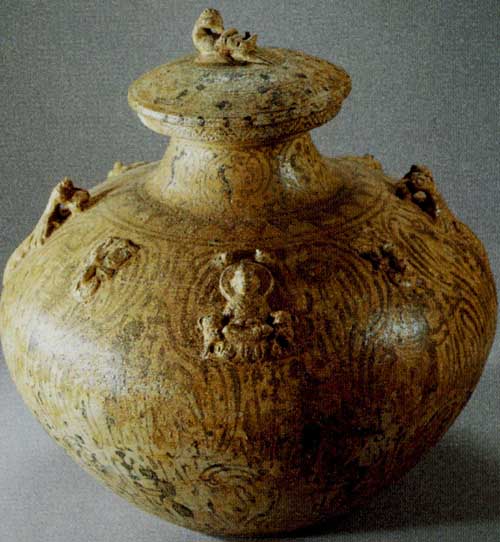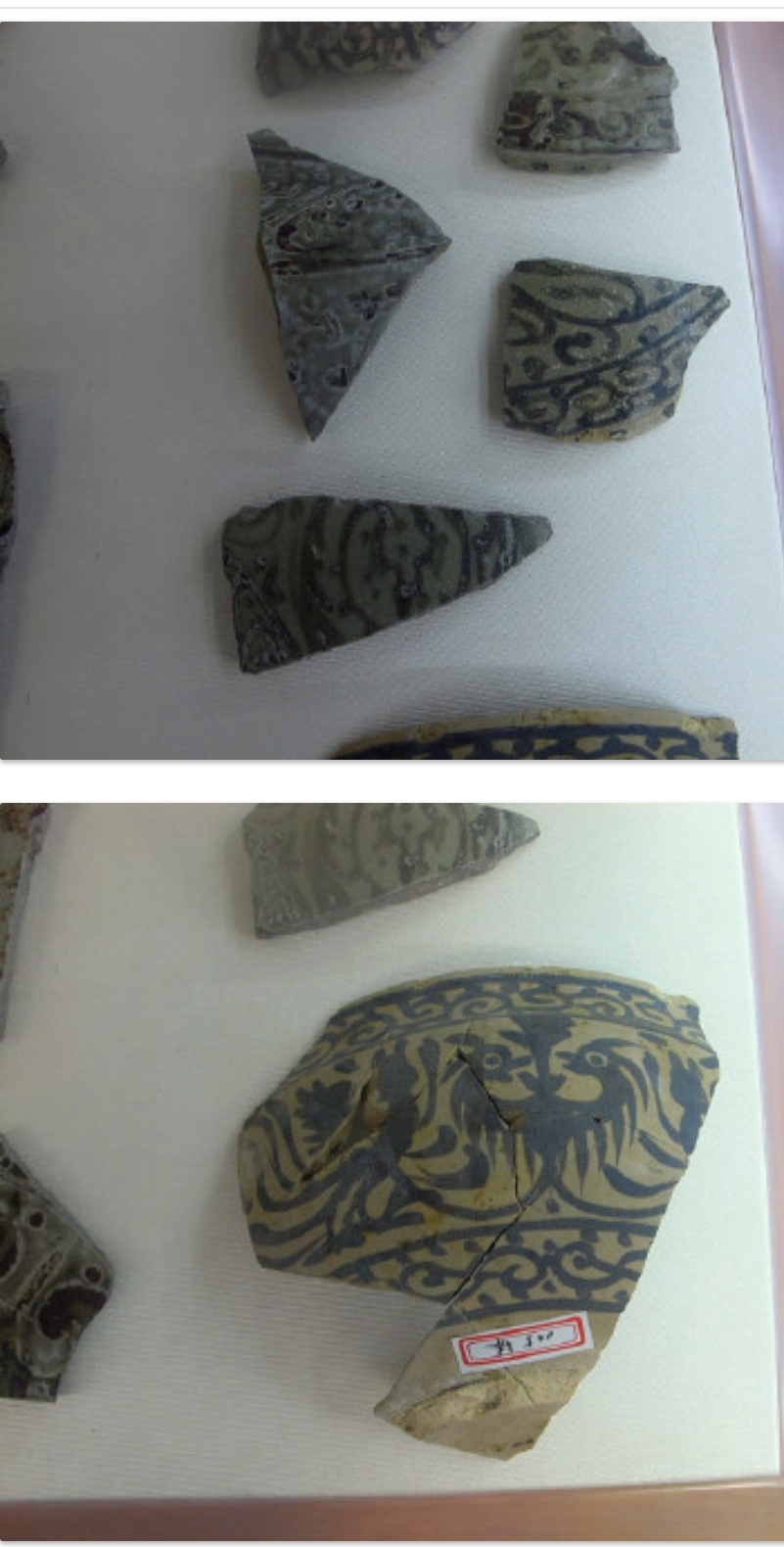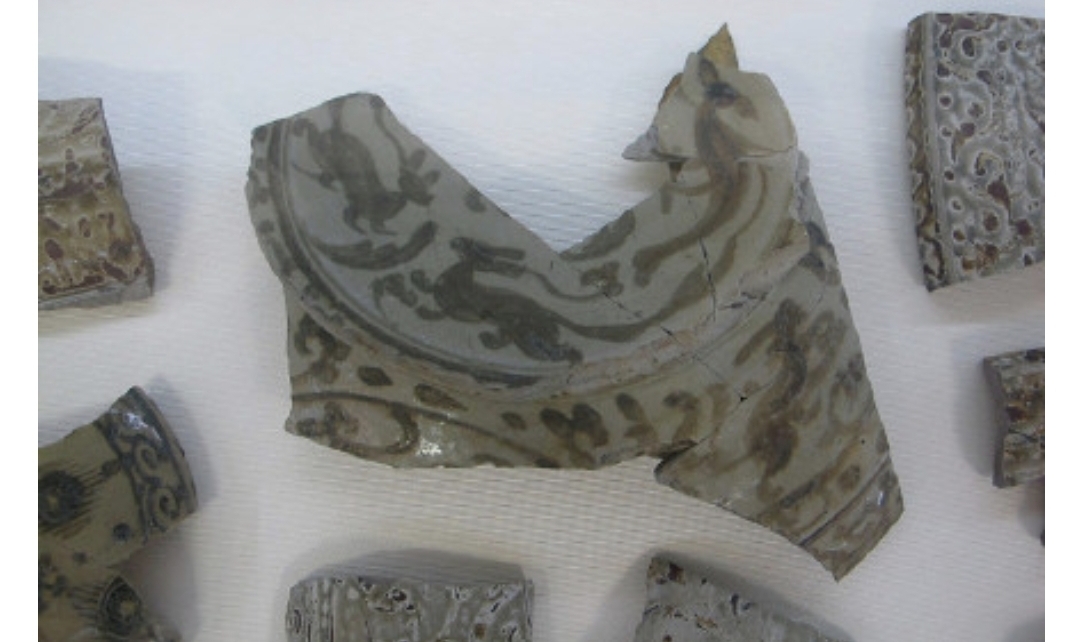
In 1988, at Nanjing Yuhuatai, a celadon Jar with cover was recovered from a tomb. The tomb dated between the Three Kingdom to early Jin Period (about more than 1700 years ago). The body of the jar is light greyish in color. It was applied with a slip before application of the glaze. The glaze is brownish in color. From the various characteristics, it is widely believed to be a product of Wuzhou kiln in Central Zhejiang.

The cover of the jar has a bird-shape knob. On the shoulder of the jar, there are luted 4 animal-masks, 2 buddha figures and two birds. On the body, there are 2 rows of human figures, each with 2 horns and wings and holding a branch with leaves. Surrounding these figures are motifs such as clouds and floral patterns. The brush strokes of the painting are lively. Unfortunately, the brown glaze obscures the drawing and affects the artistic effect. That was probably why underglaze drawing could not be further developed at that point of time.
Subsequently, some Nanjing collectors also found some fragments with underglaze iron-black decoration in Nanjing.

